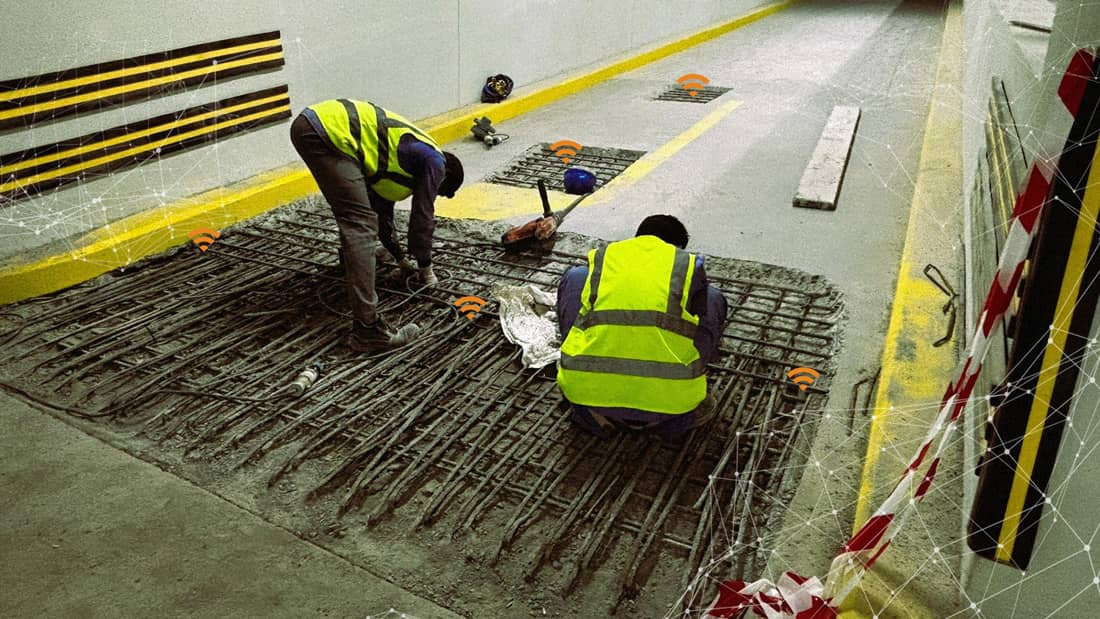Predictive vs. Reactive Maintenance for Corrosion in Concrete Structures: Leveraging Pulse IoT Technologies and AI
Maintaining the integrity of concrete structures in high-corrosive environments is a significant challenge. Traditionally, maintenance strategies have relied on reactive and planned approaches, but advancements in technology are making predictive maintenance a more viable and efficient option. This shift is particularly relevant in the geographies where harsh environmental conditions can accelerate corrosion in concrete structures.
When we look at reactive maintenance, it involves fixing issues as they arise, often after significant damage has occurred. This approach leads to several problems:
- Unplanned Downtime:Emergency repairs disrupt operations and cause unexpected downtime.
- Higher Costs: Reactive repairs are usually more expensive than planned interventions.
- Structural Risk: Waiting until corrosion is visible can mean that significant damage has already occurred, compromising structural integrity.
Let’s look at an example from the nuclear industry, which highlights: “Nuclear plants have reinforced concrete structures that are vital to process equipment performance and functionality. Corrosion diminishes structural integrity and may affect plant operations if not addressed promptly”- Nuclear Plant Journal, March-April 2015.
Planned maintenance was then introduced as a Step Forward, but it’s not Enough. Scheduled regular inspections and repairs, aiming to prevent major failures. While more proactive than reactive maintenance, this method has its own issues:
- Potential Over-Maintenance: Regularly scheduled maintenance might occur regardless of actual need, leading to unnecessary downtime and resource expenditure.
- Lack of Precision: Planned maintenance does not necessarily account for the actual condition of the structures, which can lead to inefficiencies.
That just means that you may be replacing something that doesn’t need to be replaced!
Predictive maintenance leverages technology to monitor asset conditions in real-time and predict when maintenance is needed, offering several advantages:
- Proactive Problem Solving: Predicting issues before they occur reduces the likelihood of unplanned downtime and extends the lifespan of structures.
- Cost Efficiency: Early detection of potential problems allows for timely and less costly interventions.
- Data-Driven Decisions: Utilizing IoT sensors and AI, predictive maintenance provides precise data on the condition of structures, enabling targeted maintenance activities.
At Pulse IoT Technologies, we offer innovative solutions for structural health monitoring and predictive maintenance, we do this by:
- Real-Time Monitoring: Our IoT sensors deliver real-time data on the condition of concrete structures, enabling proactive maintenance.
- Predictive Analytics: Leveraging AI, we analyse sensor data to predict potential issues before they become critical.
- Remote Monitoring: Our cloud-based platform allows for remote access to structural health data, facilitating efficient management.
- Technical Support: Our experts are always ready to assist with any questions or concerns.
A predictive program using Pulse IoT technologies includes:
- Condition Monitoring Hardware: IoT sensors embedded in concrete structures to monitor parameters like moisture levels, temperature, and pH.
- Predictive Formulas and AI: AI algorithms analyse the data to predict corrosion rates and identify early signs of deterioration.
- Integrated Platforms: Our self-service software platform integrates with existing systems, providing a comprehensive view of asset health.
Successful predictive maintenance is about detecting anomalies early and automating the actions surrounding that deviation. This approach is crucial in high-corrosive environments where early intervention can prevent significant damage.
Comparative Savings EstimateHere’s a rough estimate of potential annual savings by transitioning to Predictive Maintenance for a typical basement in a high-corrosive environment:
| Maintenance Cost Factors | Reactive Maintenance | Planned Maintenance | Predictive Maintenance |
|---|---|---|---|
| Major Failures Repair/Replacement | $100,000 | $75,000 | $25,000 |
| Downtime Costs | $20,000 | $15,000 | $5,000 |
| Labor Costs | $15,000 | $12,000 | $8,000 |
| Corrosion Repairs | $50,000 | $30,000 | $10,000 |
| Protective Measures | $0 | $20,000 | $10,000 |
| Total Annual Costs | $185,000 | $152,000 | $58,000 |
| Potential Savings | – | $33,000 | $127,000 |
In conclusion, transitioning from reactive and planned maintenance to predictive maintenance represents a significant advancement in managing concrete structures, especially in corrosive environments. By leveraging IoT and AI technologies, Pulse IoT Technologies enables proactive maintenance strategies that reduce costs, minimize downtime, and extend the life of critical infrastructure. Embracing predictive maintenance not only enhances resilience and efficiency but also ensures the long-term sustainability of assets in the UAE and beyond.

